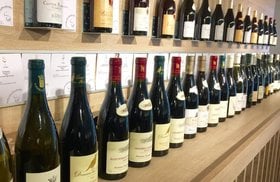Guide To Burgundy Wine: Subregions, 13 Best Wines, Prices (2025)
Burgundy produces some of the most sophisticated, terroir-influenced wines in the world.
The longevity of Burgundy wine, its appeal to the senses, and its ability to command astronomical prices have made it a favorite among wine drinkers and investors.
Let’s explore the Burgundy wine region, the grapes grown, the wine classification system, and the investment potential of Burgundy wine.
We’ll also show you some of the finest bottles you should buy and some food pairing suggestions.
Further reading
- Discover Why White Burgundy Wines are so Irresistible and the Best Bottles to Add to Your Wine Collection.
- Contrast and compare the Iconic Burgundy Bottles with the Prestigious Wines of Bordeaux.
What’s Special About Burgundy Wine?
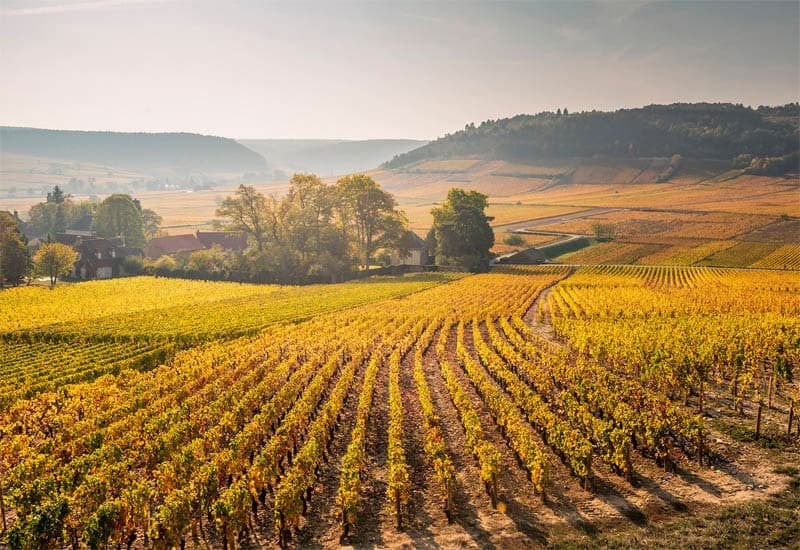
Burgundy wine comes from the valleys and slopes of Burgundy (Bourgogne) in eastern France. The region lies to the north of Lyon and the south of Paris.
Several wine styles are produced here, but the usage “Burgundy wine” usually refers to the Pinot Noir dry red wine and the white wines made from Chardonnay.
The wines from Burgundy are as revered as those from Bordeaux in southwestern France. But, in comparison to Bordeaux’s 120,000 hectares of vast vineyard lands, Burgundy is much smaller, with only around 25,000 hectares under vine.
And, the Burgundy vineyard plots are some of the smallest in the world!
What else makes Burgundian wine special?
Burgundy wines are more influenced by terroir than any other wine region in the world. The area, which was the seabed of tropical sea millions of years ago, is now layered with different types of limestone and fossils.
The oldest exposed soils are in Maconnais and the youngest in Chablis. These soils, plus the influence of sun exposure, rainfall, and drainage, impart uniquely diverse characteristics to the wines of Burgundy.
Let’s look at the finest bottles from Burgundy first, before moving on to a deeper dive into the wine region and its terroir.
13 Exquisite Burgundies to Collect in 2024 (Including Taste, Prices)
Here’s a handpicked shortlist of wines coming from some of the most prestigious Burgundy winemakers:
- Domaine Leroy Musigny Grand Cru 2015, Côte de Nuits ($134,124)
- Domaine de la Romanee-Conti Romanee-Conti Grand Cru 2015, Côte de Nuits ($33,437)
- Domaine Leflaive Montrachet Grand Cru 2015, Côte de Beaune ($13,161)
- Domaine Leroy Chambertin Grand Cru 2013, Côte de Nuits ($16,935)
- Domaine Georges & Christophe Roumier Musigny Grand Cru 2016, Côte de Nuits ($20,776)
- Henri Jayer Echezeaux Grand Cru 2000, Côte de Nuits ($7,073)
- Domaine Armand Rousseau Pere et Fils Chambertin Clos de Beze Grand Cru 2016, Côte de Nuits ($4,816)
- Coche-Dury Corton-Charlemagne Grand Cru 2014, Côte de Beaune ($6,934)
- Domaine Dujac Chambertin Grand Cru 2015, Côtes de Nuits ($5,106)
- 2001 Maison Joseph Drouhin Romanee-Saint-Vivant Grand Cru ($401)
- 2018 William Fevre Les Clos ($119)
- 2018 Domaine Pinson Freres Les Clos ($70)
- 2017 Bouchard Pére & Fils La Vignee Bourgogne Pinot Noir ($22)
1. Domaine Leroy Musigny Grand Cru 2015, Côte de Nuits ($134,124)
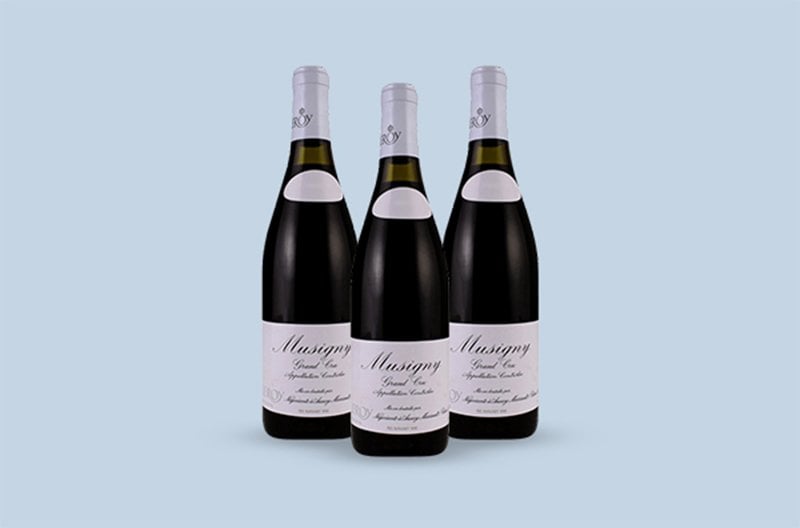
This French wine is powerful, elegant, and layered. The rich wildflower, red berry, spice, and herb notes are imbued in this balanced, finessed Pinot Noir. Drink between 2028-2070.
2. Domaine de la Romanee-Conti Romanee-Conti Grand Cru 2015, Côte de Nuits ($33,437)
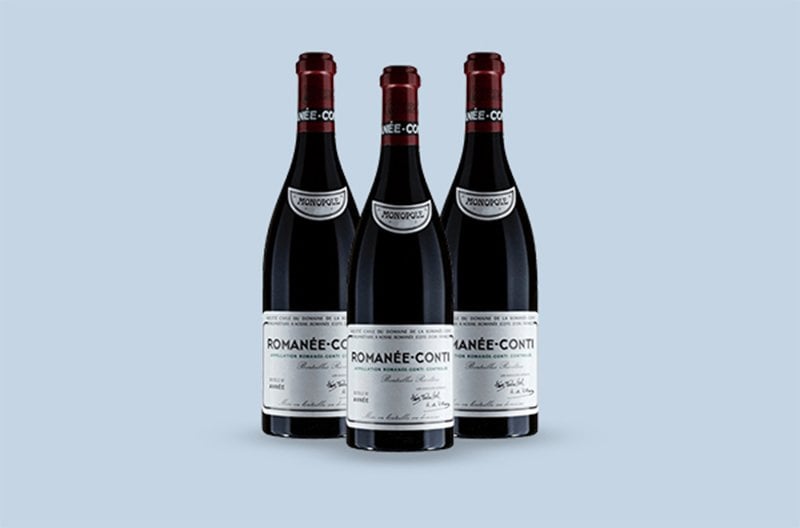
This beautiful, textured Pinot Noir offers an exotic range of perfumed floral, spice, tea, and incense-like nuances. Drink between 2022-2065.
3. Domaine Leflaive Montrachet Grand Cru 2015, Côte de Beaune ($13,161)
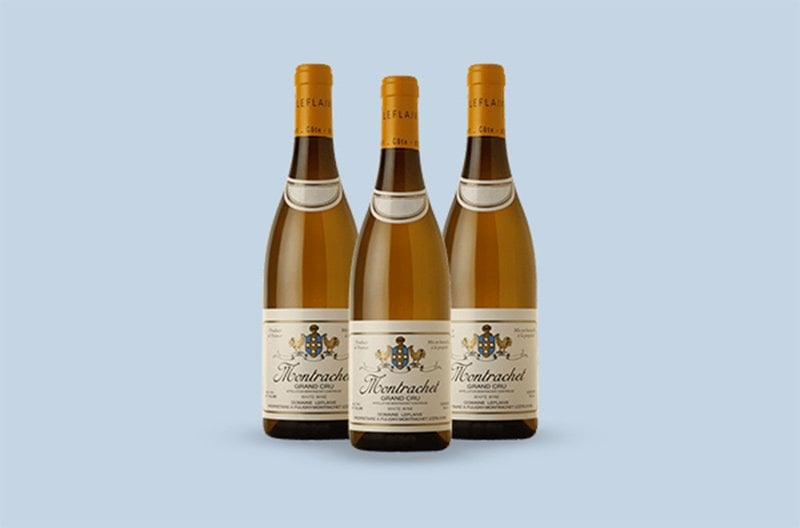
This fresh, vibrant Chardonnay from Cote de Beaune is firmly structured with a citrus-tinged acidity, retaining a graceful, persistent finish. Drink from 2020.
4. Domaine Leroy Chambertin Grand Cru 2013, Côte de Nuits ($16,935)

This 2015 Chambertin Pinot Noir has a focused minerality, savory herbs, and dark berries on the palate, and a complex, persistent finish. Drink from 2023 to 2073.
5. Domaine Georges & Christophe Roumier Musigny Grand Cru 2016, Côte de Nuits ($20,776)
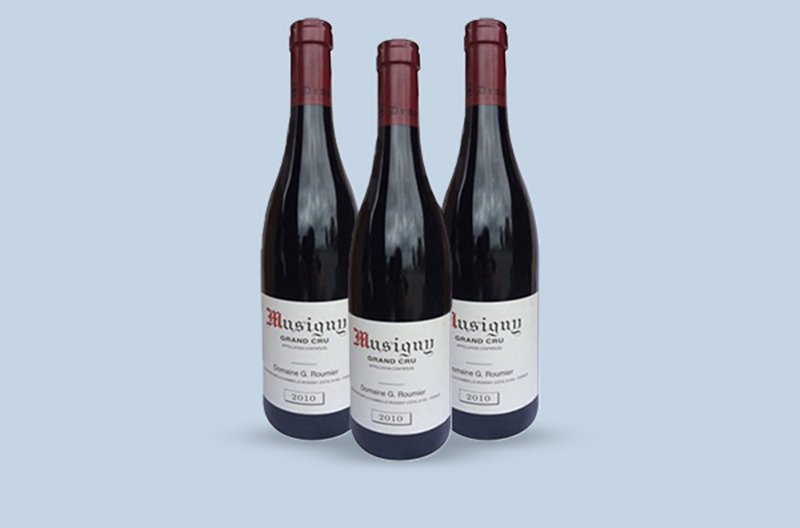
This ethereal, weightless Pinot Noir floats across the palate with lacy tannins, Asian spices, and a chalky core. Drink between 2021 to 2050.
6. Henri Jayer Echezeaux Grand Cru 2000, Côte de Nuits ($7,073)
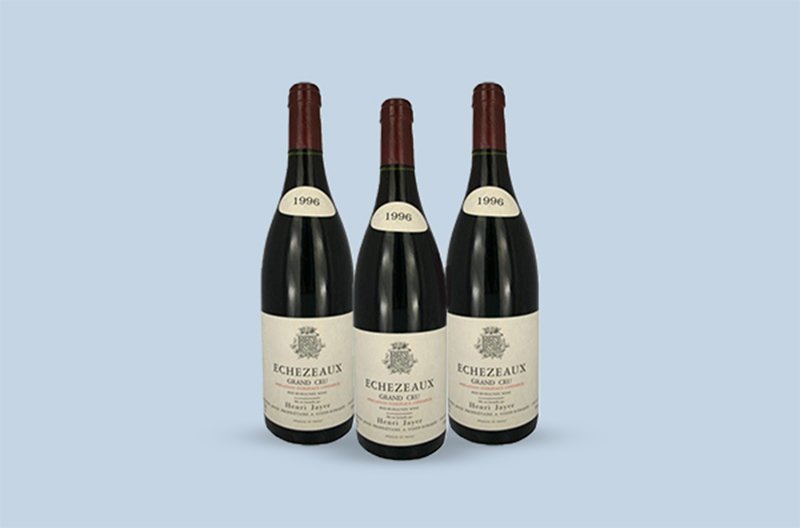
This Echezeaux vintage is a deep, smoky Pinot Noir. Rich yet well-balanced, this wine is a fine expression of the diverse Burgundy terroir. Drink from 2008 through 2025.
7. Domaine Armand Rousseau Pere et Fils Chambertin Clos de Beze Grand Cru 2016, Côte de Nuits ($4,816)
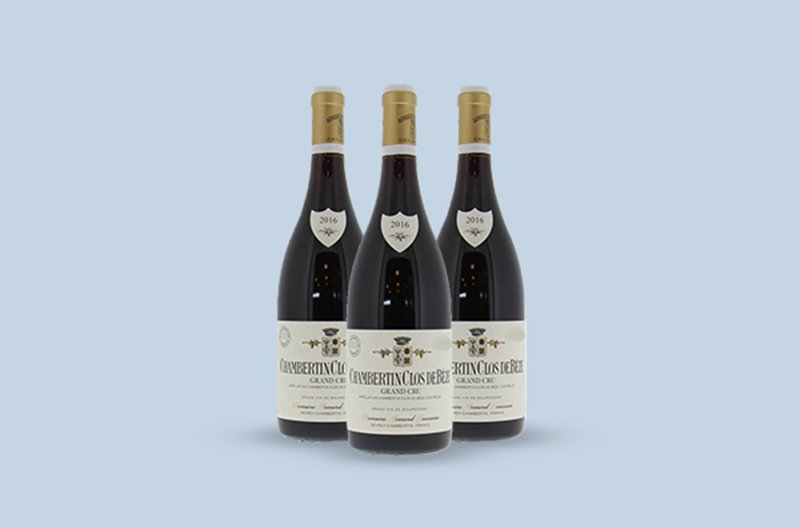
This lovely 2016 Pinot Noir unwinds with a bouquet of plums, cassis, and cherries. Full-bodied, with ripe tannins, it displays a core of concentrated fruit. Drink between 2022-2066.
8. Coche-Dury Corton-Charlemagne Grand Cru 2014, Côte de Beaune ($6,934)
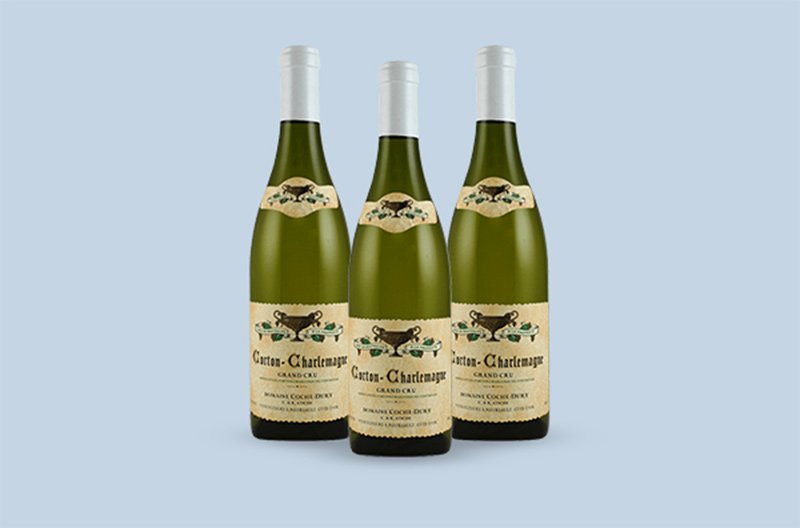
This stunning Chardonnay from Cote de Beaune offers a bouquet of yellow plum and orange marmalade. Layers of spice-tinged citrus fruit power through to a stunning finish. Drink between 2017-2050.
9. Domaine Dujac Chambertin Grand Cru 2015, Côtes de Nuits ($5,106)

This young Pinot Noir will amaze you with a decadent palate of red and black cherries, raw cocoa, fine tannins, and bright acidity. Drink between 2022-2050.
10. 2001 Maison Joseph Drouhin Romanee-Saint-Vivant Grand Cru ($401)
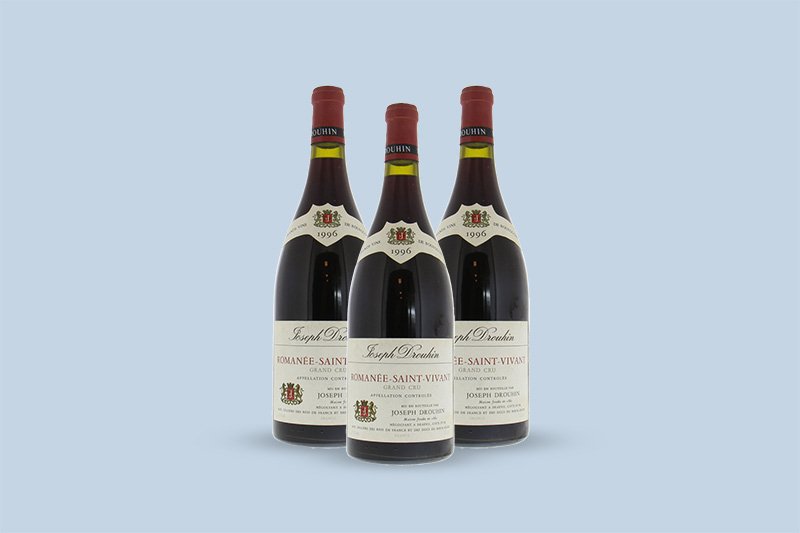
Here’s a light Pinot Noir from Joseph Drouhin. The wine showcases refreshing acidity, red fruit flavors, and earth undertones.
11. 2018 William Fevre Les Clos ($119)

This elegant Chardonnay has been aged in old oak barrels, which give the wine more texture and nutty hints. The palate is rich with pleasant salinity, mineral notes, and a long creamy finish.
12. 2018 Domaine Pinson Freres Les Clos ($70)
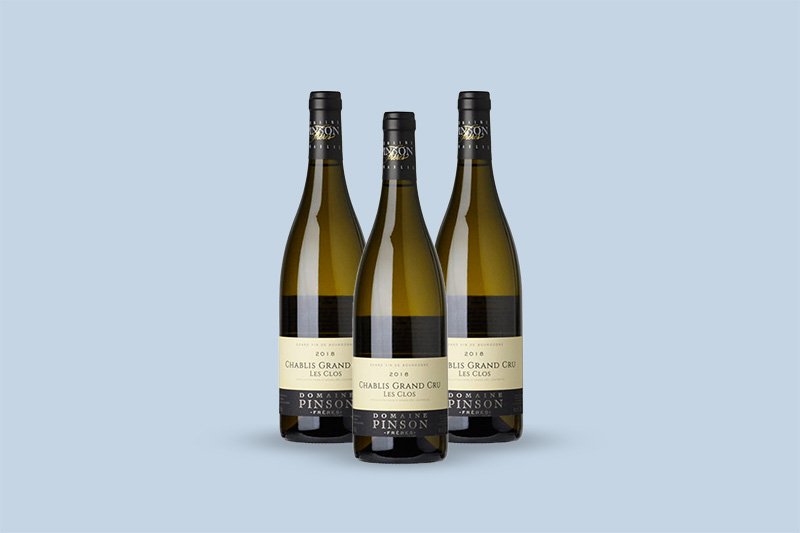
This Chardonnay opens with elegant flora aromas followed by chalky minerality, dry mouthfeel, and medium acidity. The flavor notes include lemon zest, green apple, and honey.
13. 2017 Bouchard Pére & Fils La Vignee Bourgogne Pinot Noir ($22)
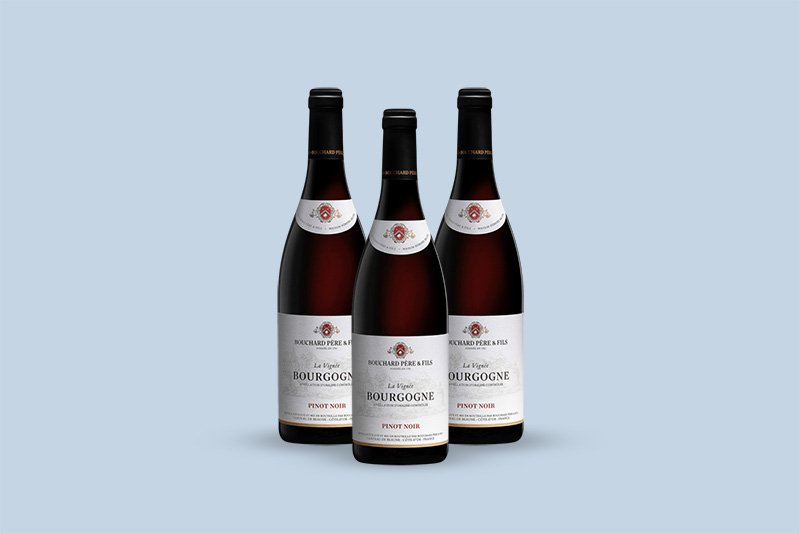
Here’s a great bottle that will delight any red wine lover. The wine is made with 100% Pinot Noir grape variety and has a tart and crisp palate with fresh strawberry, citrus, and pomegranate hints.
Now let’s see why Burgundy wine is an excellent long-term investment.
Investing in Burgundy Wine
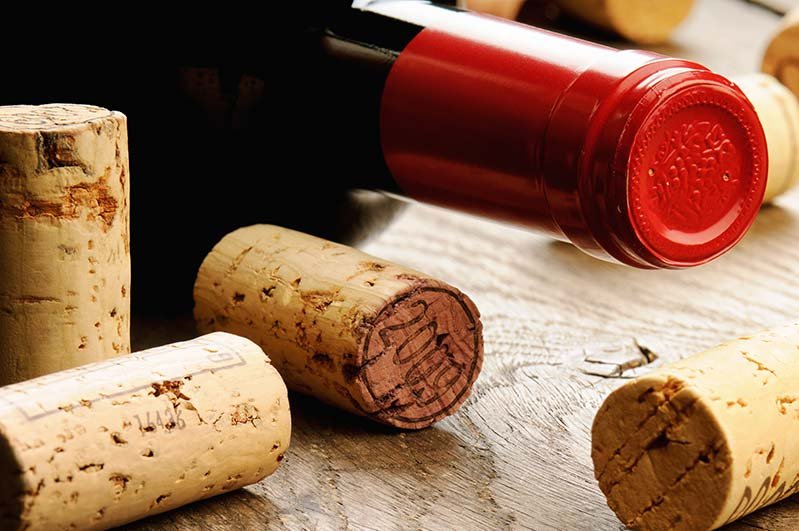
If you want to invest in the finest Burgundy and other collectible wines, check out the Vinovest website. The AI-based platform makes buying, storing, and selling wines from all over the world easier than ever before.
If you're in the UK you can get a case of fine Burgundy wine at VinoSelect.
Burgundy produces some of the world’s priciest wines, with its most expensive wine costing well over $10,000 compared to the most pricey Bordeaux at around $4,500.
Scarcity and longevity are two factors that drive up the value of Burgundy wine.
Many top Burgundy winemakers produce only a few hundred cases a year.
Also, fine red Burgundy can age close to half a century, sometimes more. White Burgundy shouldn’t be discounted, with some of the best vintages capable of aging for two to three decades.
Most investment-grade Burgundy wines come from Cote d’Or Grands Crus like Romanee-Conti, Richebourg, or Musigny. Prices also increase as the wines approach their drinking windows.
The iconic Grand Cru wines command staggering prices at auctions as well - like the 1945 Domaine de la Romanee-Conti Romanee-Conti, which was sold for $558,000 in a 2018 Sotheby’s auction.
Food Pairings with Burgundy Wine
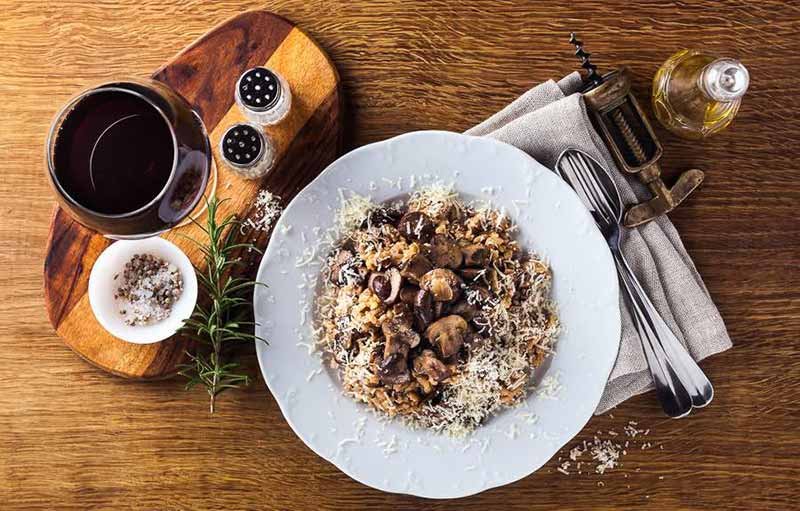
Here are some delicious dishes to match with your Burgundy wines:
Pair a youthful red Burgundy with:
- Mild cheeses like brie or goat cheese
- Seared tuna
- Chicken in creamy mustard sauce.
- Rack of lamb in herbs
- Mushroom risotto
Aged or weightier red Burgundy can go with:
- All kinds of meats, like richly-sauced boeuf bourguignon and coq au vin
- Roast grouse, pheasant, or partridge
- Guineafowl and goose
Some great wine pairing ideas for a glass of white Burgundy are:
- Buttery roast chicken
- Fish cooked in butter
- Seared scallops
- Baked crabmeat with cheese
Time for a deeper look into the factors that make Burgundian wine so special!
The Signature Burgundy Grapes: Pinot Noir and Chardonnay
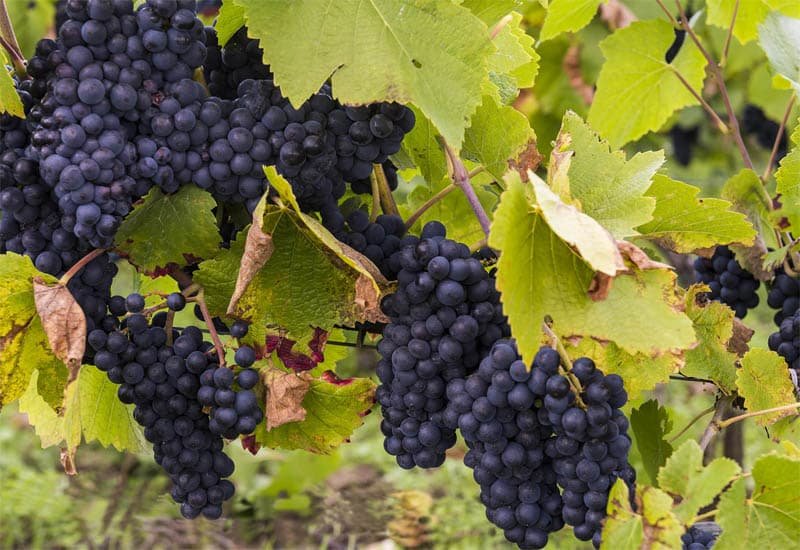
Burgundy’s cooler climate allows the Pinot Noir and Chardonnay grape varieties to ripen slowly, creating elegant nuances in the resulting wines.
The Pinot Noir and Chardonnay Burgundies are produced as single varietal wines, and the taste profile is highly dependent on the vintage performance.
51% of the vineyards in Burgundy grow Chardonnay, and 40% are planted with the Pinot Noir grape. The other 8% are dedicated to grape varieties like:
- Aligote
- Gamay
- Sauvignon Blanc
- César
The Subregions of Burgundy: Terroir, Wine Styles, and Flavor Profiles
Burgundy is divided into five subregions:
1. Chablis

This area is geographically separated from the rest of Burgundy and is located closer to Champagne.
It’s known for its lean Chardonnay white wine. Most of the Chardonnay is unoaked and labeled “Chablis,” not “white Burgundy.”
The Kimmeridgian limestone here is white, chalky, and reflects the warmth of the sun. This helps the Chardonnay grape ripen, producing a crisp, pure wine.
2. Côte de Nuits
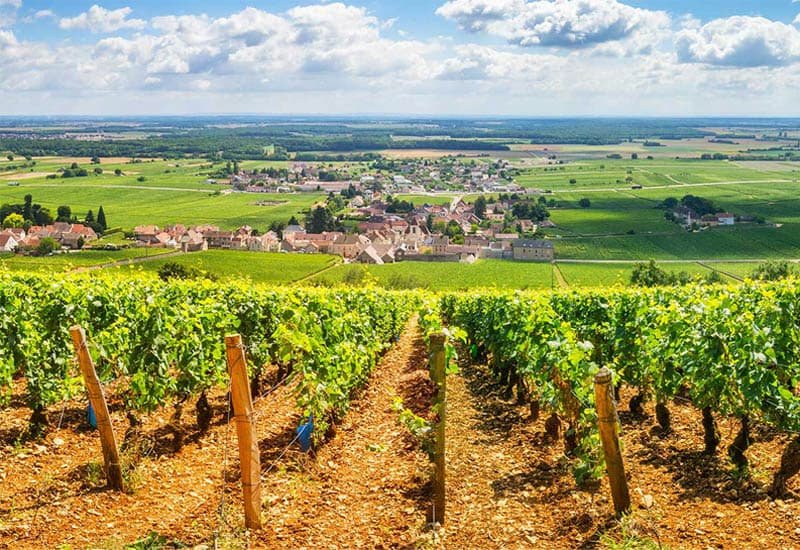
Côte de Nuits is located just south of Dijon. It is home to 24 Grand Cru vineyards that occupy the eastern slopes, starting with northern Gevrey-Chambertin to Vosne Romanee in the south.
This area is famous for its age-worthy Pinot Noir (80% of its production), with the remaining dedicated to Chardonnay.
The expressive red wines of this region display classic Burgundy notes of black currant, cherry, and spice. Some of the white Premier Cru wines are highly collectible too.
3. Côte de Beaune
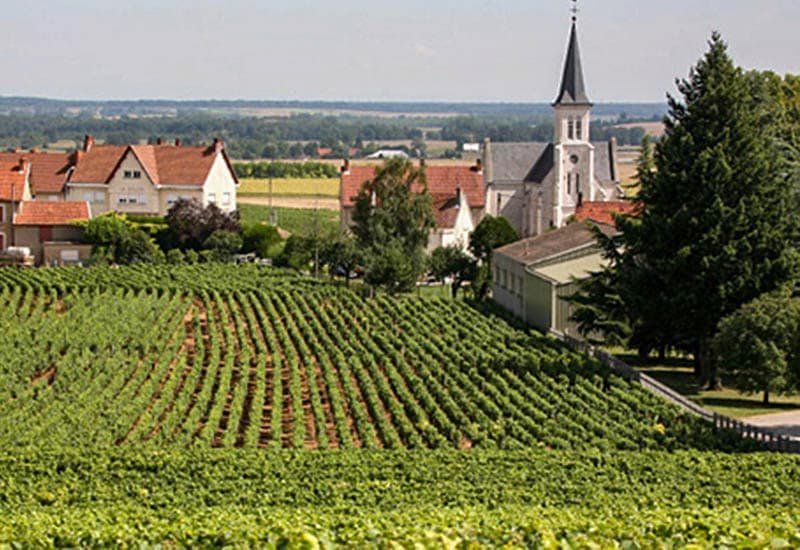
If Cote de Nuit is popular for Pinot Noir, then Cote de Beaune is revered for its rich, oaked Chardonnays.
The open, rolling valleys of Cote de Beaune have a southeasterly exposure, producing expressive Burgundy whites filled with soft white flower, fresh apple, and pear aromas.
Seven of the eight Grand Cru vineyards here (including Corton-Charlemagne, Corton, and Montrachet) produce incredible white wine. The Premier Cru wines of Meursault and Puligny-Montrachet are just as loved.
Don’t overlook the fantastic red wines too, which offer flavors of plum and cherry with earthy minerality.
Note: Côte de Nuits and Côte de Beaune are known together as Côte d’Or and are historically the most important Burgundy wine regions. All Burgundy Grand Crus are located in Côte d’Or, except the Chablis Grand Cru vineyard sites.
4. Côte Chalonnaise
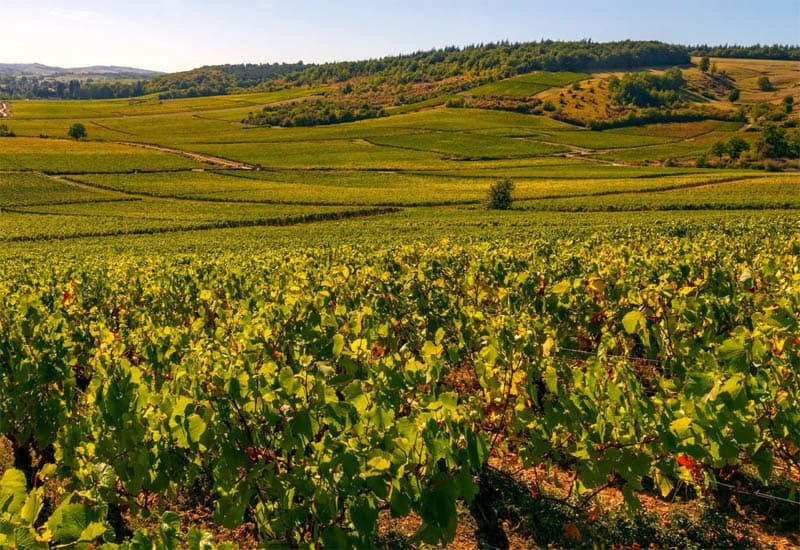
Côte Chalonnaise is known for its great value Pinot Noir and smooth Chardonnay from AOC Bourgogne villages like Mercurey, Montagny, and Givry.
Some appellations diverge from the usual Pinot Noir and Chardonnay. Bouzeron, for example, is the only Burgundy appellation devoted to the Aligote grape variety, producing a floral wine with notes of honey, citrus, and flint.
Rullyis the center for the vibrant white and Rose sparkling wine - Crémant de Bourgogne.
5. Mâconnais

This is the largest and most southerly Burgundy region, known for its easy-drinking, great value Chardonnay.
The warmer southern climate allows an earlier grape harvest, resulting in a wine with soft apple, pineapple, honeysuckle, and citrus peel notes. The most famous appellation is Pouilly-Fuissé, with its beautiful, open vineyards and limestone and granite soils.
And you’ll find the famous Beaujolais region just over the hills farther south. Beaujolais is technically part of Burgundy but is considered a wine region of its own.
Burgundy Wine Classifications

Burgundy has more AOCs (Appellation d'Origine Controlee) than any other French wine region.
Classifications are given to a specific vineyard or region and they’re divided into four quality levels. They cover all of Burgundy except Chablis (which has its own classification.)
1. Grand Cru
At the top of the list lie the 33 Grand Cru vineyards like Romanee-Conti, Clos de Vougeot, and Chambertin.
This prestigious group represents just under 2% of Burgundy’s production, and this is where the most complex, cellar-worthy wines come from.
2. Premier Cru
The Premier Cru vineyard class comes next. These classified vineyard plots (climats) produce exceptional wines that can also cellar well.
There are 640 climats in Burgundy, accounting for 10% of the region’s production. Some famous examples are Volnay Premier Cru, Chablis Premier Cru, and Santenots.
Sometimes, wines made from younger vines in a Grand Cru vineyard are sold as Premier Cru at a lower price. This way the Grand Cru wines can be produced exclusively from older vines to enhance their complexity and quality.
3. Village Wines
On the third tier are the village wines, which take up 37% of the Burgundy wine production. These are wines from communes with unique characteristics. Not all Burgundy communes have a village appellation.
The 44 Burgundy village appellations include Pommard, Mâcon Villages, and Nuits-St-Georges. You can find a village wine from top producers at lower prices, like Joseph Drouhin Côte de Nuits-Villages.
4. Regional Wines
Regional wines take up the remaining 51% of Burgundy production and are made from grapes grown anywhere in Burgundy. This includes:
- Bourgogne Rouge appellation (for red wine)
- Bourgogne Blanc (for white wine)
- Crémant de Bourgogne AOC (for sparkling wine)
5. Chablis Classification System
The Chablis wine classification also has four tiers, from top to bottom:
- Grand Cru Chablis: There’s one Chablis Grand Cru with seven climats (like Les Clos and Valmur.) These Chardonnay wines are oaked and can age quite well.
- Premier Cru Chablis: Nuanced and elegant, these 1er Cru wines come from limestone marl climats like Mont de Milieu and Fourchaume.
- Chablis: These third-tier wines are rounder with a mineral character.
- Petit Chablis: The fourth tier includes grapes grown around the Chablis villages. They are citrusy with high acidity and are best drunk in their youth.
A Quick History of Burgundian Wine

The roots of Burgundy wines can be traced back to the Roman empire. Here’s a look at significant events that have shaped the region into what it is today.
- Winemaking existed two millennia ago: Winemaking in the Bourgogne region existed even before the Romans came, thanks to the trade between Gaul and Italy. In 52 BC, the Romans conquered the region, bringing greater expertise in grape growing and winemaking.
- The monastic orders: Around the 1st century AD, the Bourgogne land was cared for by the Cistercian and Cluniac Orders. The monks established the idea of terroir, marking out the vineyard into specific climats.
- The Bourgogne Dukes: In the 14th century, many vineyards belonged to the Dukes of Burgundy.
The Dukes banned the abundant Gamay grape, promoting the Pinot Noir grape variety instead, giving way to the production of far more complex wines.
- Royalty and Revolution: By the 17th century, the monasteries sold their vineyards to the ruling class. The 18th century saw the emergence of négociant houses that bought Burgundy wine from growers and aged it in their own cellars before resale.
Then came the French Revolution. Vineyards were seized and broken into smaller plots, redefining the viticultural landscape.
- Present-day renown: World War I marked a slow down in the success of Burgundy wine. But, interest picked up soon after World War II.
Today, a winemaker can sell Burgundy wine through cooperatives, négociant houses, and Domaine bottlings, and these bottles are available in almost 180 countries.
Add A Slice of Burgundian History To Your Collection Now!
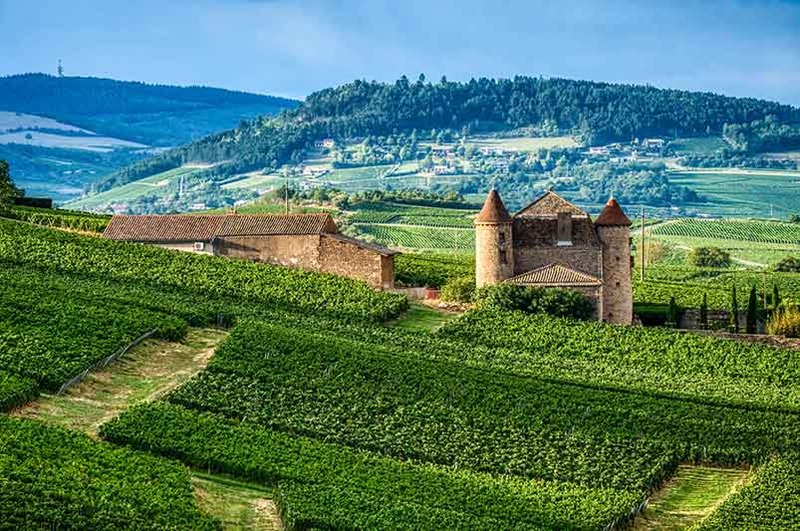
Each bottle of Burgundy is a reflection of the terroir, seasons, and winemaking expertise honed over the centuries — a unique, sensory experience for any wine enthusiast.
Don’t miss out on these priceless bottles - simply head over to Vinovest to buy a coveted Burgundy, a rare Cabernet Sauvignon, or any other fine wine from your bucket list!


